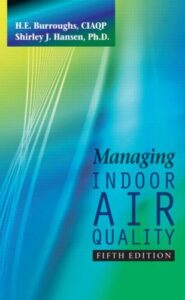Managing Indoor Air Quality, Fifth Edition
Managing Indoor Air Quality, Fifth Edition
Managing Indoor Air Quality, Fifth Edition Finding solutions to indoor air quality problems is often a complex, multifaceted endeavor. This practical desk reference serve as a guide and information resource – both on treating existing indoor air problems effectively – and on preventing costly IAQ problems from occurring in the first place. A single discipline approach unfortunately tends to narrow both the control and the treatments options. This book cuts across professions to offer those concerned with the total facility a broader, more comprehensive approach to managing indoor air quality and mitigating indoor air quality problems. The fifth edition is extensively updated and edited in response to the rapid pace of changes and advances in the IAQ industry.
You can also Download HAP 4.9 HOURLY ANALYSIS PROGRAM
Managing Indoor Air Quality, Fifth Edition
- Preface
![Managing Indoor Air Quality, Fifth Edition]()
- Indoor Air Quality: An Overview—Where Are We?
- Indoor Air Quality In Retrospect: How Did We Get Here?
- Classifying Indoor Air Problems: What Kind and How Big a Problem Do We Have?
- Investigating Indoor Air Quality Problems: How to Find Out What Went Wrong?
- Controlling Indoor Air Problems: How to Keep the Building Working Well?
- The Thermal Environment: An Internal Habitat
- HVAC: The Heart of the System
- Filtration: Understanding an Underutilized Asset
- Building Security and Safety: Readying Your Building For “Extraordinary “Environmental Stress
- Operations & Maintenance: An Ounce of Prevention
- Management Procedures: The Soft Side of iaq Success
- What “They” Say From Whence Does My Help Cometh?
- A—Glossary of Acronyms and Abbreviations
- B—Glossary of Terms
- C—Selected Resources and References
- D—Investigation Forms
- E—Guidance Checklist for Design Documentation
- Index
Buildings don’t always protect their occupants from pollution. Just the opposite, the molds, fungi, dust and toxic gases trapped or growing on the inside may well exceed those outdoors. By shielding ourselves from the outside environment, we have created an inside environment with a whole new set of problems. To understand this delicate and fragile interrelationship and interdependence between the indoor and the outdoor environment, building owners and managers need to view the building as a “habitat” or an “ecosystem.”


Comments are closed.